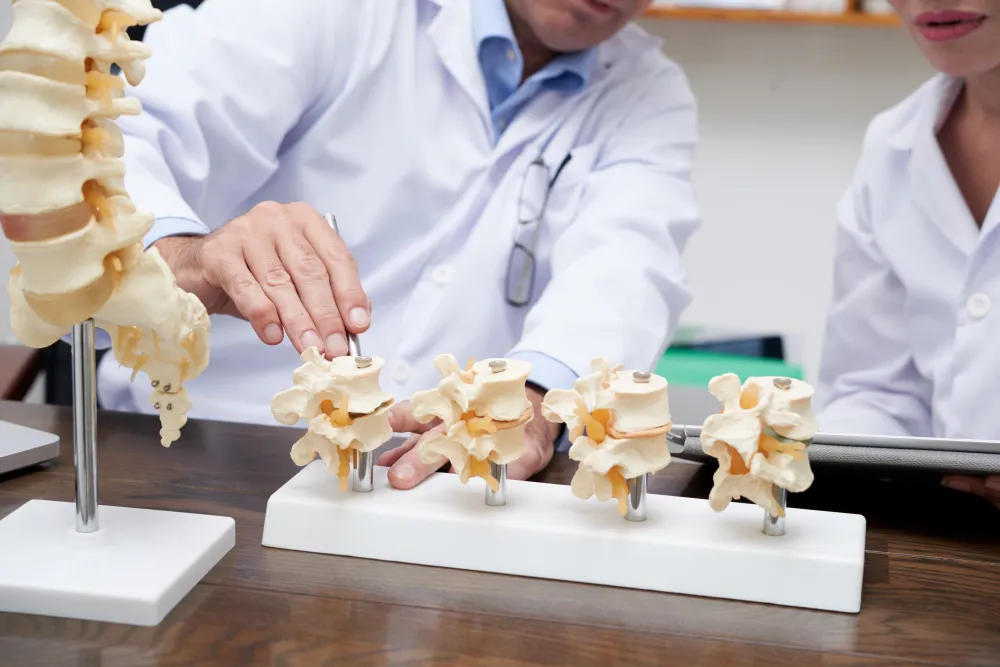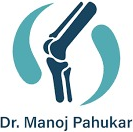Critical & Osteoporotic Fracture Treatment for Elderly in Nagpur
Specialized care by expert orthopedic surgeons to restore mobility, reduce complications, and improve quality of life for senior patients.
What is Critical Fractures
These are fractures that have significant implications on the health, mobility, and quality of life of the elderly. They often require immediate medical intervention and can lead to severe complications or even mortality if not treated promptly and effectively. Such fractures typically involve the hip, pelvis, spine, or femur and demand rapid stabilization, surgical care, and close monitoring to prevent long-term disability.
What is Osteoporotic Fractures
These are fractures that occur due to osteoporosis, a condition characterized by decreased bone mass and density, leading to fragile bones. Osteoporotic fractures commonly occur in the spine, hip, and wrist and are a major concern in the elderly population. They often result from minimal trauma, such as a simple fall or even bending, and require specialized treatment to restore function and prevent future breaks.

Common Types of Critical and Osteoporotic Fractures in the Elderly
Hip Fractures
- Fractures of the proximal femur, including femoral neck fractures and intertrochanteric fractures.
Significance
- High morbidity and mortality often result in loss of independence and increased risk of complications like pneumonia and thromboembolism.
Spinal Compression Fractures
- Fractures that occur in the vertebral bodies, typically in the thoracic or lumbar spine.
Significance
- Can cause severe pain, kyphosis (curvature of the spine), and decreased lung capacity.
Wrist Fractures
- Fractures of the distal radius, often resulting from falls.
Significance
- Can lead to significant impairment in hand and wrist function, affecting the ability to perform daily activities.
Pelvic Fractures
- Fractures of the pelvic bones, often involving the pubic rami or sacrum.
Significance
- Can lead to prolonged immobility, pain, and risk of complications like deep vein thrombosis (DVT).
Humeral Fractures
- Fractures of the proximal humerus or upper arm.
Significance
- Can impair arm and shoulder function, leading to difficulties in performing daily activities.
Risk Factors for Osteoporotic Fractures
Osteoporotic fractures are more likely to occur in individuals with weakened bones due to age, lifestyle, or medical history. Identifying these risk factors helps in prevention and early intervention.
- Age: Bone density naturally decreases with age, increasing fracture risk.
- Gender: Women, especially postmenopausal, are more prone due to lower estrogen levels.
- History of Previous Fractures: A prior fracture greatly raises the chance of future breaks.
- Family History: Genetics plays a role in the family history of osteoporosis, increasing personal risk.
- Medications: Long-term use of corticosteroids and other bone-affecting drugs weakens bone structure.
- Lifestyle Factors: Smoking, alcohol use, and inactivity contribute to bone loss over time.
- Nutritional Deficiencies: Low calcium and vitamin D intake reduce bone strength and resilience.
Clinical Evaluation
Accurate diagnosis is essential for effective treatment of critical and osteoporotic fractures in the elderly. A combination of clinical assessment and imaging helps guide the best care plan.
History & Physical Examination
A thorough review of symptoms and physical assessment to evaluate pain, deformity, joint movement, and overall functional ability.
Imaging Studies
- X-rays: First-line tool to detect and confirm bone fractures.
- CT Scans: Provides detailed views of complex or joint-involved fractures.
- MRI: Detects soft tissue damage and bone marrow changes not visible on X-rays.
Bone Density Testing
- DEXA Scan: Measures bone mineral density to diagnose osteoporosis and assess fracture risk.
Treatment of Critical and Osteoporotic Fractures
Treatment for elderly patients with fractures focuses on restoring mobility, relieving pain, and preventing complications. Depending on the severity and type of fracture, both non-surgical and surgical options are considered to ensure safe and effective recovery.
Non-Surgical Management
Used for stable fractures or patients with high surgical risk, this approach emphasizes conservative care and bone health support.
Pain Management
- Analgesics, anti-inflammatory medications, and sometimes opioids for severe pain. Pain control improves comfort and allows early participation in rehabilitation.
Immobilization
- Bracing or casting to stabilize the fracture and allow for healing. Helps prevent further injury while the bone naturally repairs itself.
Physical Therapy
- Rehabilitation exercises to maintain mobility and strength, prevent complications, and enhance recovery. Tailored programs help patients regain independence and reduce fall risk.
Pharmacotherapy
- Medications to treat osteoporosis, such as bisphosphonates, calcium, and vitamin D supplements. Supports bone regeneration and reduces the chance of future fractures.
Surgical Management
Surgical treatment is often necessary for unstable, displaced, or high-risk fractures in elderly patients. These procedures aim to restore mobility, reduce pain, and prevent long-term complications.
Hip Fractures
- Internal Fixation: Screws, plates, or intramedullary nails are used to stabilize the broken femur. Suitable for younger elderly patients with good bone quality and less displacement.
- Hip Replacement: Partial or total hip arthroplasty replaces the damaged joint with an artificial implant. Recommended for severe fractures or osteoporotic bones where fixation may fail.
Spinal Compression Fractures
- Vertebroplasty/Kyphoplasty: Minimally invasive procedures that inject bone cement to stabilize collapsed vertebrae. Provide rapid pain relief and improve spinal alignment.
- Spinal Fusion: Surgical joining of vertebrae using rods and bone grafts to stabilize the spine. Reserved for severe instability or neurological symptoms.
Wrist Fractures
- Closed Reduction and Casting: Manual realignment of the fracture followed by immobilization with a cast. Effective for stable fractures without joint involvement.
- Open Reduction and Internal Fixation (ORIF): Surgical exposure of the fracture and fixation using plates and screws. Used for displaced or unstable wrist fractures affecting function.
Pelvic Fractures
- Conservative Treatment: Bed rest, pain control, and physiotherapy for stable, non-displaced fractures. Focuses on gradual recovery without surgical intervention.
- Surgical Fixation: Plates, screws, or external devices used to stabilize displaced pelvic bones. Indicated when fractures compromise mobility or internal organ safety.
Humeral Fractures
- Conservative Treatment: A Sling or brace is used to immobilize the arm and allow natural healing. Suitable for minimally displaced fractures with good alignment.
- Surgical Fixation: ORIF or intramedullary nailing to stabilize the humerus and restore shoulder function. Recommended for complex or unstable fractures in active elderly patients.
Prevention of Osteoporotic Fractures
Preventing osteoporotic fractures in the elderly involves strengthening bones, improving balance, and reducing fall risks through proactive lifestyle and medical strategies.
- Lifestyle Modifications: Engage in regular weight-bearing and strengthening exercises; avoid smoking and limit alcohol.
- Nutritional Interventions: Ensure adequate calcium and vitamin D intake through diet and supplements.
- Fall Prevention: Make home safety changes, practice balance training, and use assistive devices when needed.
- Regular Screening: Get bone density tests and follow medical advice for early osteoporosis management.
Critical and osteoporotic fractures in the elderly present significant challenges due to the frailty of the population and the high risk of complications. A comprehensive approach involving early diagnosis, appropriate medical and surgical management, and preventive measures is essential to improve outcomes and maintain the quality of life for elderly patients. Timely intervention, multidisciplinary care, and patient education play key roles in managing these complex conditions.
Restore Mobility and Confidence with Expert Elderly Fracture Care
Don’t let fractures compromise independence. Dr. Manoj Pahukar offers advanced, compassionate treatment tailored for elderly patients, from diagnosis to full recovery.
Frequently Asked Questions
How do I know if an elderly person needs emergency care after a fall?
If they’re unable to stand, have severe pain, visible deformity, or confusion, seek immediate medical attention.
Can osteoporosis cause fractures without a fall or injury?
Yes, even minor movements like bending or coughing can cause fractures in severely osteoporotic bones.
Is surgery safe for elderly patients with multiple health conditions?
Yes, with proper preoperative evaluation and modern techniques, surgery can be safely performed in most cases.
How long does it take for elderly patients to regain mobility after a fracture?
Recovery varies, but with early rehabilitation, many regain basic mobility within weeks to months.
Are spinal compression fractures always painful?
What role does physiotherapy play in fracture recovery for seniors?
It helps restore strength, balance, and independence while preventing complications like stiffness or falls.
Can osteoporotic fractures be prevented after the first break?
Should family members be involved in post-fracture care?
Absolutely, support with mobility, medication, and emotional reassurance greatly improves recovery outcomes.
